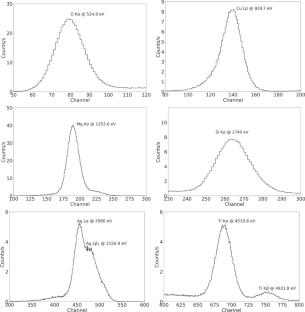Ground calibration result of the Lobster Eye Imager for Astronomy
Abstract
We report on results of the on-ground X-ray calibration of the Lobster Eye Imager for Astronomy (LEIA), an experimental space wide-field (18.6 \(\times \) 18.6 square degrees) X-ray telescope built from novel lobster eye micro-pore optics. LEIA was successfully launched on July 27, 2022 onboard the SATech-01 satellite. To achieve full characterisation of its performance before launch, a series of tests and calibrations have been carried out at different levels of devices, assemblies and the complete module. In this paper, we present the results of the end-to-end calibration campaign of the complete module carried out at the 100-m X-ray Test Facility at the Institute of High-energy Physics, Chinese Academy of Sciences (CAS). The Point Spread Function (PSF), effective area and energy response of the detectors were measured in a wide range of incident directions at several characteristic X-ray line energies. Specifically, the distributions of the PSF and effective areas are roughly uniform across the FoV, in large agreement with the prediction of lobster-eye optics. The mild variations and deviations from the prediction of idealized, perfect lobster-eye optics can be understood to be caused by the imperfect shapes and alignment of the micro-pores as well as the obscuration of incident photons by the supporting frames, which can be well reproduced by Monte Carlo simulations. The spatial resolution of LEIA defined by the full width at half maximum (FWHM) of the focal spot ranges from \(\textbf{4}\) to \(\textbf{8}\) arc minutes with a median of \(\mathbf{5.7}\) arcmin. The measured effective areas are in range of \(\mathbf{2-3}~\mathbf {cm^2}\) at \(\mathbf{\sim }\)1.25 keV across the entire FoV, and its dependence on photon energy is also in large agreement with simulations. The gains of the four complementary metal-oxide semiconductor (CMOS) sensors are in range of \(\mathbf{6.5-6.9}~\mathbf {eV/DN}\), and the energy resolutions in the range of \(\mathbf{\sim 120 - 140}\) eV at \(\mathbf{1.25}\) keV and \(\mathbf{\sim 170-190}\) eV at \(\mathbf{4.5}\) keV. These calibration results have been ingested into the first version of calibration database (CALDB) and applied to the analysis of the scientific data acquired by LEIA. This work paves the way for the calibration of the Wide-field X-Ray Telescope (WXT) flight model modules of the Einstein Probe (EP) mission.


 求助内容:
求助内容: 应助结果提醒方式:
应助结果提醒方式:


